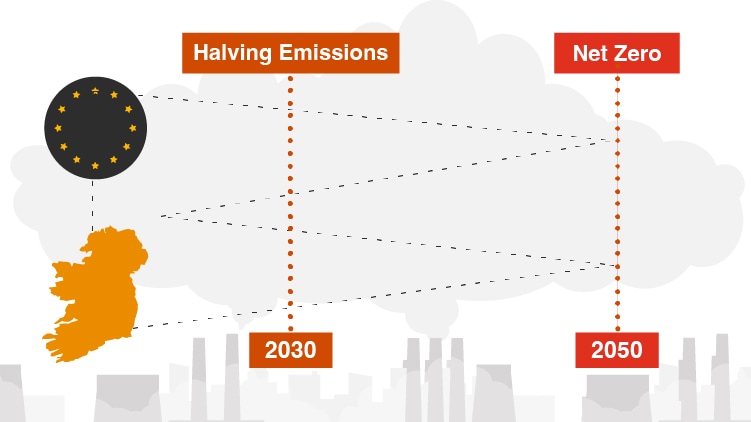
2. Plan for energy resilience and sustainability
According to Engineers Ireland, Ireland faces an energy trilemma where we must meet our energy needs while ensuring that we (i) increase sustainable energy production, (ii) keep our energy supply secure, and (iii) maintain affordability. Diversity of supply and investment in infrastructure, such as interconnectors and energy storage, are essential in overcoming this trilemma. Challenges in delivering such critical infrastructure in Ireland are well documented. Cities around the world show how this can be done and there are some promising examples from closer to home.
Renewably-powered cities: Burlington and Cloughjordan
Vermont’s largest city, Burlington, was the first US city powered completely by renewable energy. The population of 42,000 once relied mostly on coal but now receives their power from four renewable sources: biomass, hydro, wind and solar. The city intends to have net zero emissions by 2030. The Cloughjordan Ecovillage in Tipperary has the lowest ecological footprint of any settlement in Ireland. It hosts a district heating network powered by a wood chip boiler, a 500m2 solar panel array, a hostel and an enterprise centre. The village is now home to 130 people and has been recognised internationally. Many of the greatest cities are formed of a collection of small villages. In this way, Cloughjordan may influence the development of urban communities.
District heating schemes: Brescia and Dublin
Large factories near cities produce significant emissions – some in the form of waste heat. A steel mill about two miles from the city centre in Brescia embarked upon a district heating project. Waste heat from the steelmaking process is recovered and distributed through the city’s district heating system, providing enough heat for 2,000 families. The project yields a CO2 reduction of 10,000 tonnes annually. Dublin has had mixed success with district heating. In Tallaght, waste heat from a data centre is harnessed to heat the nearby South Dublin County Council offices and the TU Dublin campus. TU Dublin is also assessing the feasibility of geothermal district heating at its city campus. However, a district heating system for Ringsend in Dublin, which has been in the pipeline for years and has the capacity to heat 80,000 homes, has been slow to progress.














Menu